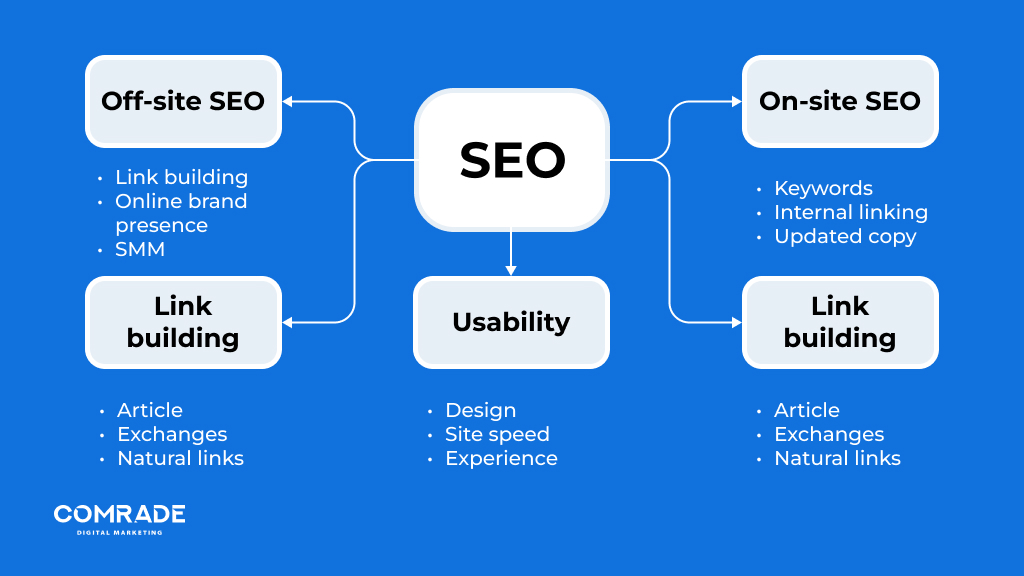Recognizing What Is Not Considered a Default Medium in Google Analytics: Insights
Recognizing What Is Not Considered a Default Medium in Google Analytics: Insights
Blog Article
Taking Advantage Of the Power of Non-Default Mediums in Google Analytics for Strategic Decision-Making
In the world of calculated decision-making, the use of Google Analytics is often seen as a conventional practice for obtaining insights from on the internet data. What if there were untapped sources within Google Analytics that could potentially reinvent the way organizations make choices? By venturing past the default mediums in Google Analytics and diving right into alternate sources of data, services can open a trove of beneficial info that may hold the secret to getting an affordable edge in the marketplace. This undiscovered territory of non-default mediums offers a compelling possibility for calculated minds looking to harness the full potential of analytics for educated decision-making.
Checking Out Non-Default Mediums in GA
By delving into alternative mediums beyond the default settings in Google Analytics (GA), businesses can get deeper understandings into their online website traffic resources and individual behavior patterns. One such tool is UTM specifications, which allow organizations to track the performance of particular advertising and marketing campaigns or networks.
This data can reveal just how users engage with the site and assistance identify areas for improvement to boost the individual experience. Generally, by leveraging these different mediums in GA, businesses can make more enlightened decisions to drive their online success.
Leveraging Unconventional Information Resources

These non-traditional information resources can provide businesses with unique viewpoints that might not be recorded by default metrics in Google Analytics. For example, sentiment analysis of social networks mentions can use insights into client contentment degrees, while phone call monitoring data can disclose which advertising projects are driving phone queries. By incorporating these non-traditional resources of information into their analytics strategy, organizations can make more enlightened decisions, optimize advertising and marketing initiatives, and improve total performance based upon an all natural sight of their on the internet tasks.
Taking Full Advantage Of Insights Beyond Standard Networks
To remove deeper insights beyond the standard channels in Google Analytics, services need to strategically diversify their information sources. what is not considered a default medium in google analytics. While Google Analytics offers beneficial details on internet site web traffic and user behavior, integrating added information from non-default mediums can provide a more detailed view of efficiency and customer communications. By incorporating information from social media sites platforms, e-mail advertising projects, CRM systems, and offline resources, companies can obtain an alternative understanding of their target market's trip and preferences

Enhancing Strategic Decision-Making With Analytics
In leveraging a varied range of data sources past basic networks, services can improve their critical decision-making by utilizing the power of analytics to educate and guide vital company decisions. By integrating innovative analytics devices and strategies, organizations can gain much deeper understandings into consumer habits, market fads, and operational performance. With the evaluation of data from different resources such as social media sites, mobile apps, and customer feedback, businesses can create a much more thorough understanding of their target audience and market characteristics.
Analytics makes it possible for businesses to recognize patterns, trends, and relationships that might not be promptly noticeable with typical click for source information analysis methods. By leveraging these insights, organizations can make even more informed choices pertaining to product growth, advertising techniques, and source allowance - what is not considered a default medium in google analytics. Furthermore, analytics can help companies track the efficiency of their initiatives in real-time, enabling quick changes and optimizations to enhance overall efficiency
Fundamentally, the strategic combination of analytics right into decision-making procedures encourages organizations to stay nimble, competitive, and responsive to progressing market conditions. By accepting analytics as a core element of their strategic toolkit, companies can drive growth, advancement, and long-term success.
Revealing Affordable Advantages in Information
By delving right into the depth of information insights, companies can successfully reveal affordable benefits that propel them ahead in the market landscape. In today's data-driven world, business are progressively recognizing the relevance of leveraging data to gain an affordable edge. By assessing various information points such as client behavior, market patterns, and rival efficiency, organizations can draw out valuable insights that notify tactical decision-making.
One trick element of uncovering competitive benefits in data is recognizing patterns and trends that offer one-of-a-kind insights right into customer preferences and market dynamics. By utilizing sophisticated analytics tools like Google Analytics, services can track individual communications, site web traffic, and conversion rates to comprehend customer behavior much better. This, in turn, enables companies Look At This to tailor their advertising strategies, item offerings, and customer experiences to fulfill progressing needs effectively.
Moreover, data analysis can also reveal untapped chances for technology and development. By determining spaces in the marketplace or areas where rivals fail, businesses can establish brand-new products or services that deal with unmet requirements and distinguish themselves from the competition. Inevitably, leveraging data to discover competitive benefits is not practically collecting details but regarding equating it into workable strategies that drive success in today's competitive business atmosphere.
Conclusion

By venturing beyond the default tools in Google Analytics and delving into alternate resources of data, companies can unlock a trove of important details that might hold the secret to gaining a competitive side in the market.Discovering beyond the conventional information sources in Google Analytics, organizations can open important insights by tapping right into unique data click to investigate streams for a more comprehensive understanding of their on the internet performance. Leveraging unusual data sources entails using details from numerous networks such as social media platforms, consumer reviews, phone call monitoring systems, e-mail advertising metrics, and even offline sources like in-store foot traffic information.To draw out deeper insights beyond the requirement channels in Google Analytics, companies should purposefully diversify their information resources.In leveraging a diverse range of information sources beyond conventional channels, organizations can boost their tactical decision-making by harnessing the power of analytics to inform and direct essential business decisions.
Report this page